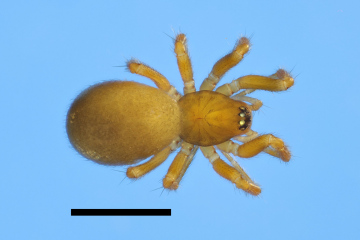Summary for Centromerus levitarsis (Araneae)
previous species | next species
National Distribution
Terms of Use. Double-click on map to go to region

Explore Regional Distribution
Please log on and add a note on this species
About this species
Recorded altitude range10m to 350m
Species text
DistributionThe species has been known from Delamere Forest, Cheshire, since 1906. Since 1970, it has also been recorded from Glasson Moss and Biglands Bog, Cumberland; Foxtor Mires, Dartmoor, South Devon; Flanders Moss, Stirlingshire and Kentra Moss, Argyll. The European distribution includes Ireland (van Helsdingen 1997), Estonia, France, Italy, Germany, the Netherlands, Sweden, Finland, the former Czechoslovakia and Poland.
Habitat and ecology
Blanket bog, moorland, damp woodland. C. levitarsis is most often found among Sphagnum, both in damp woodland (mainly birch) and on open moorland. It has been taken near large pools in a wet blanket bog system. Adults of both sexes have been found in March and April, females also in May and a male in October.
Status
Recorded from three hectads since 1992, but showing a decline of 75% in hectads with spider records both before and after this date. Known from three locations with an area of occupancy of just three hectads since 1992. Shows a decline of 75% in area of occupancy when comparing records from before this date with those after.
Threats
Much of Glasson Moss has been commercially cut for peat, a practice which ceased in the 1950s. There have been a series of fires on this bog, the most recent and most serious being in 1976. There are signs that eutrophication of Biglands Bog is occurring. This may be due to run-off from the heavily fertilised pasture and arable land which surrounds it, or from Bampton Beck, or both. Bampton Beck crosses the site and carries the outflow of a sewage works. It occasionally floods the bog.
Management and conservation
Raising the water table and prevention of fires is being achieved by damming the drains on Glasson Moss.
Text based on Dawson, I.K., Harvey, P.R., Merrett, P. & Russell-Smith, A.R. (in prep.). References
Adult Season
Habitats
background methodology
Recorded management for locations with Centromerus levitarsis
Recorded substrate and hydrology for locations with Centromerus levitarsis
Images
please log on and upload a new image for this speciesSee also A-Z Species Index - A-Z Picture Index - previous species | next species

